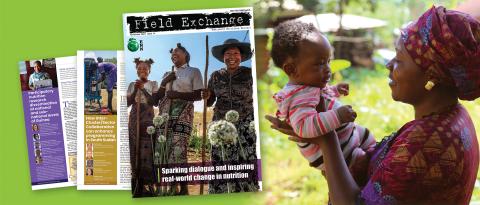Re-thinking the research focus of the double burden of malnutrition
This is a summary of the following paper: Kiosia A, Dagbasi A, Berkley J, et al (2024) The double burden of malnutrition in individuals: Identifying key challenges and re-thinking research focus. Nutrition Bulletin, 49, 132-145. https://onlinelibrary.wiley.com/doi/10.1111/nbu.12670
The coexistence of undernutrition and overnutrition, referred to as the ‘double burden of malnutrition (DBM)’, is a global health challenge that increasingly affects populations in low-and middle-income countries (LMICs). Occurring within the same community, household, or even the same individual, it creates a complex and challenging situation for practitioners, research experts, and policymakers who must simultaneously address both public health concerns.
Various physiological changes have been documented, including alterations to the gut microbiome induced by severe wasting. This can underpin long-term outcomes, notably when coupled with the increasing prevalence of obesity in LMICs. There is limited evidence of how to protect populations concurrently at risk of undernutrition, overnutrition, and low micronutrient status (the ‘Triple Hit’ hypothesis) and subsequent major health problems. The authors of this review aimed to provide a concise introduction to DBM in individuals and identify the key challenges and limitations in the available research. Leading scientists gathered for a workshop held in January 2023 to explore this further.
Changes in lifestyle, economic status, and commercial determinants (for example, advertising and the availability of healthy and unhealthy foods) are contributing to the rise of obesity in urban areas of LMICs. The authors outlined several risk factors for DBM, including suboptimal nutrition during the first 1,000 days, poor infant feeding practices, early-life malnutrition and infections, and the availability of energy-dense foods in food insecure environments. The authors gave particular attention to the gut microbiota, acknowledging research that has shown significant microbiota immaturity in undernourished children, which can have long-term implications on immune and metabolic functions.
The authors outlined the main challenges in tackling DBM, including lack of access to affordable and nutritious food as a direct result of poverty, low agricultural productivity, and weak food supply chains. In addition, in the countries mostly affected by DBM, obesity is still an emerging health issue with health systems primarily focused on tackling undernutrition and infectious diseases.
A holistic and inclusive approach addressing both socio-economic and physiological determinants was highlighted as essential to tackle the complex challenges of DBM in individuals. To achieve this, an improved understanding of the key metabolic and inflammatory pathways is needed, especially during the first 1,000 days period. Malnutrition markers that can better predict recovery from complex and severe malnutrition are also needed. Regarding the inpatient management of complicated severe wasting, the impact of antibiotics on the gut microbiota needs further investigation. The authors called for innovative therapeutic interventions in inpatient settings, focusing on gut repair and optimising the microbial environment.
In summary, DBM poses serious long-term consequences for public health, development, and the productivity of LMICs. Increased effort to address research gaps is important to ensure the achievement of the Sustainable Development Goals and the eradication of all forms of malnutrition.


